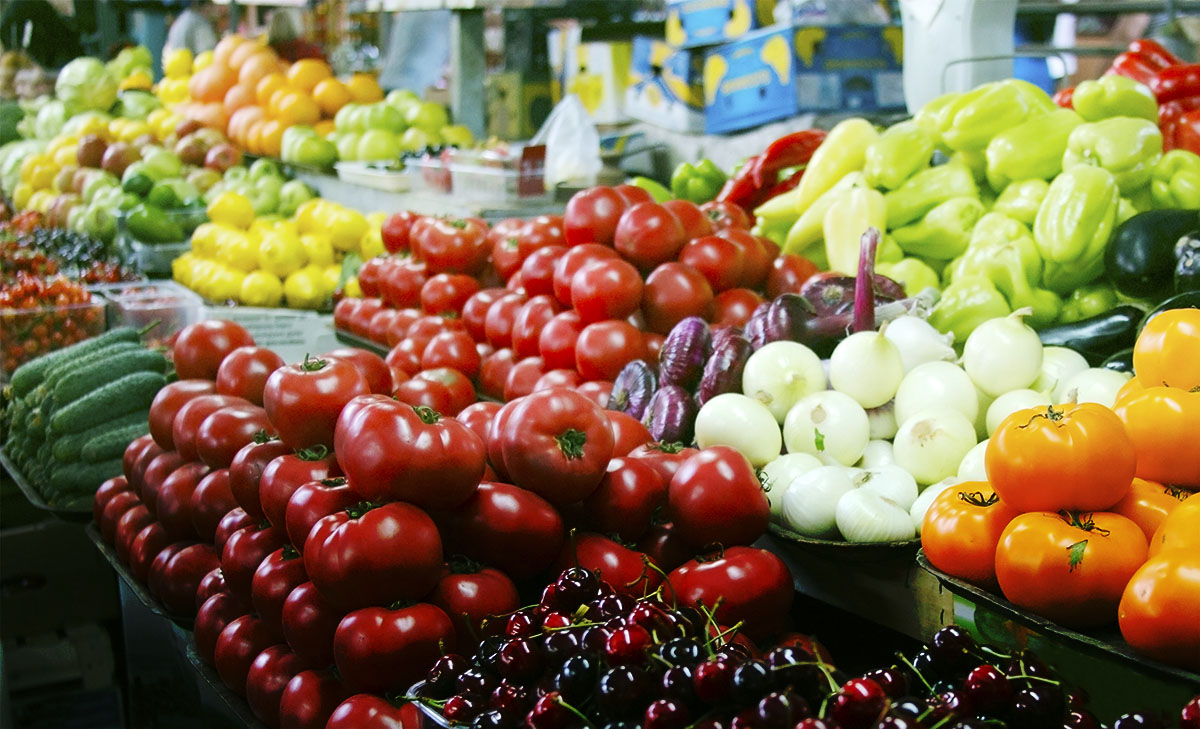Elementary | Sponsored By: Corteva Agriscience
Project Produce

Is Lesson Plan Lesson Plans Life Science Elementary
Adapted from Project Produce by Donna M. Wolfinger
Science & Children | January 2005 | Vol 42, Issue 4
Objective
Students will learn about plant classification and growth needs by investigating how various foods are grown and imported along with why so many unfamiliar foods show up in the local grocery store.
- Variety of items found in a grocery store produce section
- Internet research resources
- Reference sources from a library
- Cookbooks
- Maps and flags of countries where food is grown
- Community members to interview
- Kitchen supplies (toaster ovens, hotplates, electric woks, bowls, choppers, spoons and dishes)
- Presentation supplies
Activity Outline
- Take students on a field trip to your local grocery store’s produce section to gather data. Arrange students in teams and instruct them to explore the produce section, using store signs and packaging for identification. If a class field trip is not an option, this can alternatively be done as a homework assignment. Students will need to write down the names of fresh and dried items, and they can draw pictures to help them remember what some of the unfamiliar foods looked like.
- Once back in the classroom, have students make a master list of all of the items they found in the grocery store. As a class, brainstorm ways in which the produce items can be classified into three or four categories. Some possibilities are the external characteristics of the items—color, shape, size, and odor. Other possibilities include whether it is a vegetable, fruit or something else.
- Divide the students into groups and have them develop their own classification system for the items on the master list and then ask the students to classify the items. After students have classified the items, they should conduct informal group presentations to the class and discuss why they placed them into the categories.
- Students then conduct research in the library and on the Internet to find out what scientists have to say about the differences. This will result in student discovery of scientific definitions of fruit and vegetable, but also introduce them to other terms such as nut, berry, pome, drupe, and fungi.
- Using the definitions found during their research, students can reconsider their list from the grocery store. They should begin to see that classification is based on the characteristics for the items being classified and not on personal preferences. Once the students have a better understanding of fruit versus vegetable versus fungi, they should return to their original classification systems and reclassify the items to better reflect their new understanding.
- Branching out from science and classification, have students use maps and globes to locate the countries of origin for each of the items. Students can further research where the foods are grown, how the foods reach their local grocery stores, and how they are used in cooking. Reference books, parents, classmates, the Internet, and cookbooks are all helpful resources.
- Invite local backyard gardeners or farmers to come and talk about their gardens and what they needed to grow well. They can discuss the best conditions for growing plants, importance of fertilizers, proper soil pH, crop protection, and more.
Class Discussion Questions:
- How does this grow? What does this look like when it is growing?
- What part of a plant is this? Is this a fruit or a vegetable?
- What’s the difference between a berry, a nut, a fruit, and a vegetable?
- Do you cook this or eat it raw? Or both?
- What do these things taste like?
- Why are there so many different kinds of apples, potatoes, tomatoes, onions, etc.? How are they different?
- Why is tofu found in the produce section?
- What is a fruit and how do you know it isn’t a vegetable?
- When did the stores start to stock foods like ______? Why are the stores beginning to stock these foods?
- Did the neighborhood around the store change during the past five years?
- Do some people use the new or unusual things more than others? Are different foods found in particular areas of the community?
- Do the kinds of foods in a particular grocery store match the different groups of people in the area?
- Is there any reason other than a change in ethnic makeup of the community that would results in the introduction of new produce items?
- Does anyone in this area grow these things? 15. How do farmers ensure their crops are safe from pests and disease?
Post Assessment
As a culminating activity, invite parents to hear presentations from the students on what they learned about the produce section, the foods contained in it and their own community.
Extension Activities
Transform your classroom into a kitchen with toaster ovens, hotplates, electric woks, bowls, choppers, spoons, dishes and more. Enlist the help of parents to help students prepare, cook, and eat a variety of the foods they discovered at the grocery store.
Before taking your class to the grocery store, be certain to gain permission from parents and to arrange the field trip with the store manager and the produce manager. Discuss with both managers the purpose of the trip and the kinds of information they might be asked to supply (i.e., names of unfamiliar items, where they came from, how they get to the store). Ask that they not provide samples to taste in case of allergies. If students with disabilities are a part of the class, be certain the setting is accessible to all students.
Contact parents so that students with food allergies can be accommodated.
Closely supervise any sharp objects or hot appliances and only permit adults to use them. Students should not be using any sharp objects or hot appliances.


